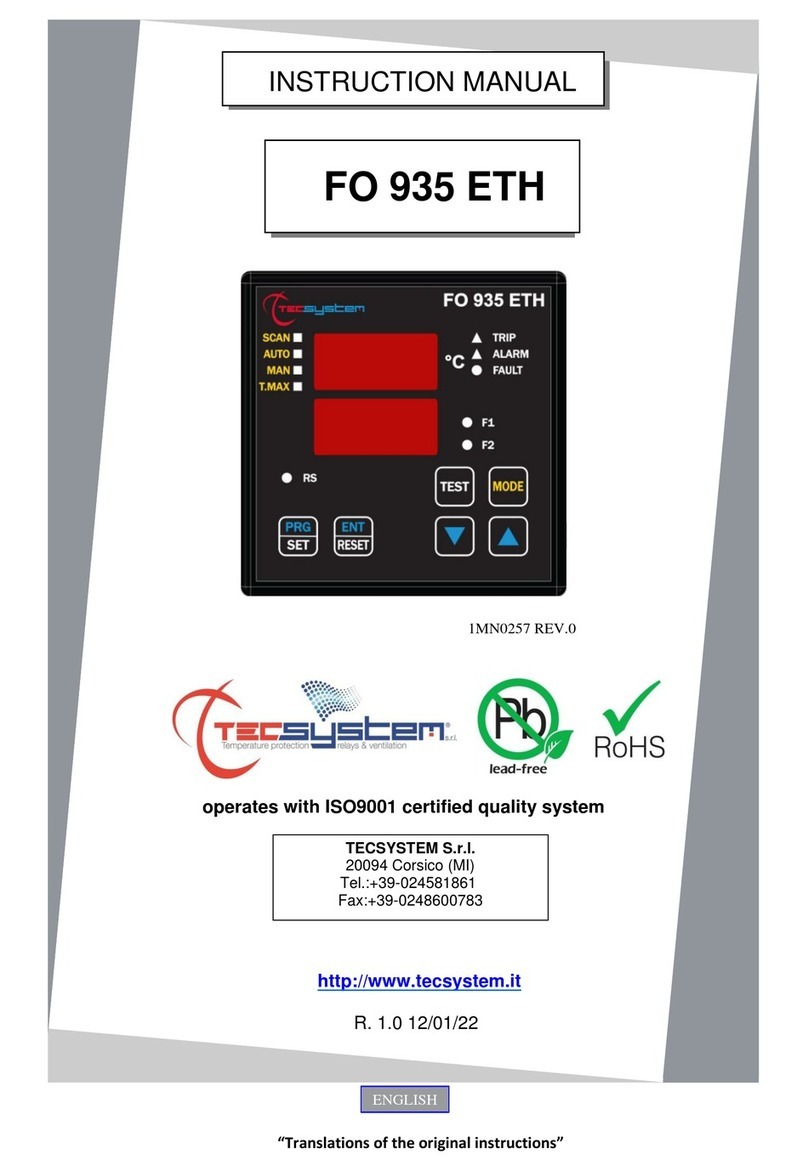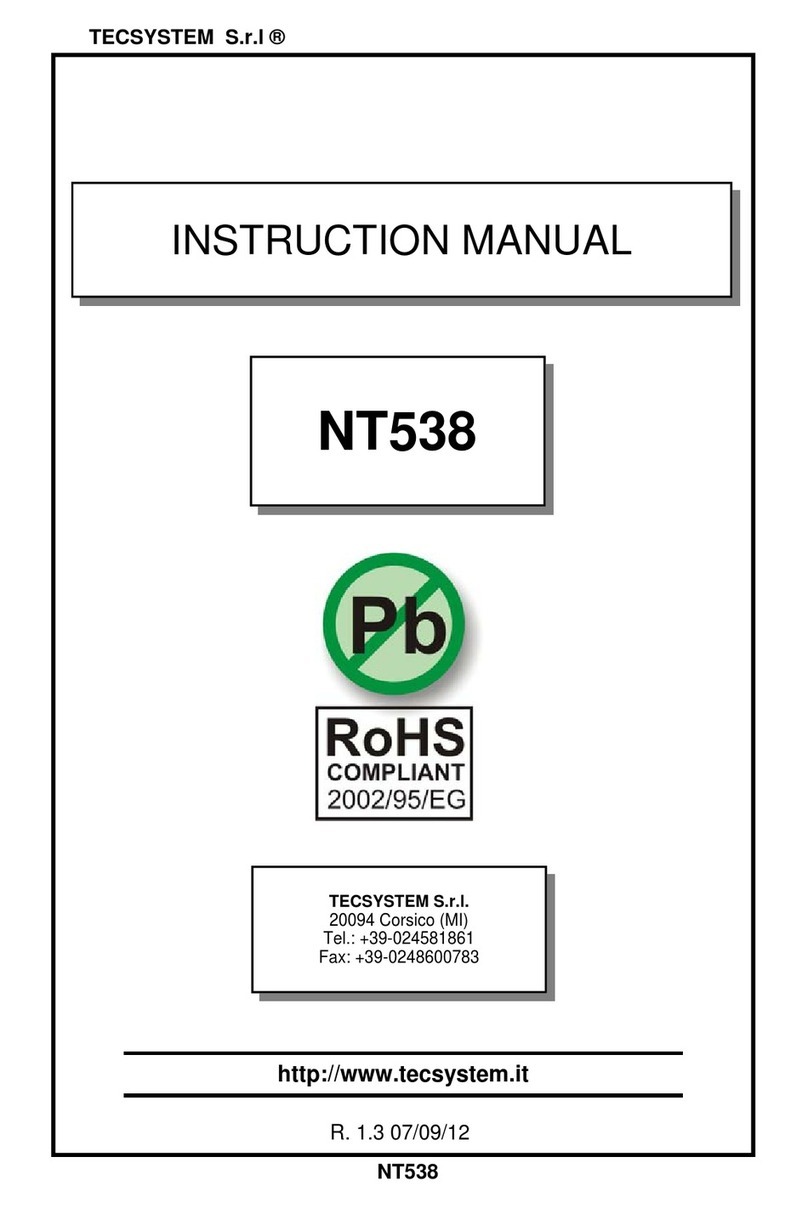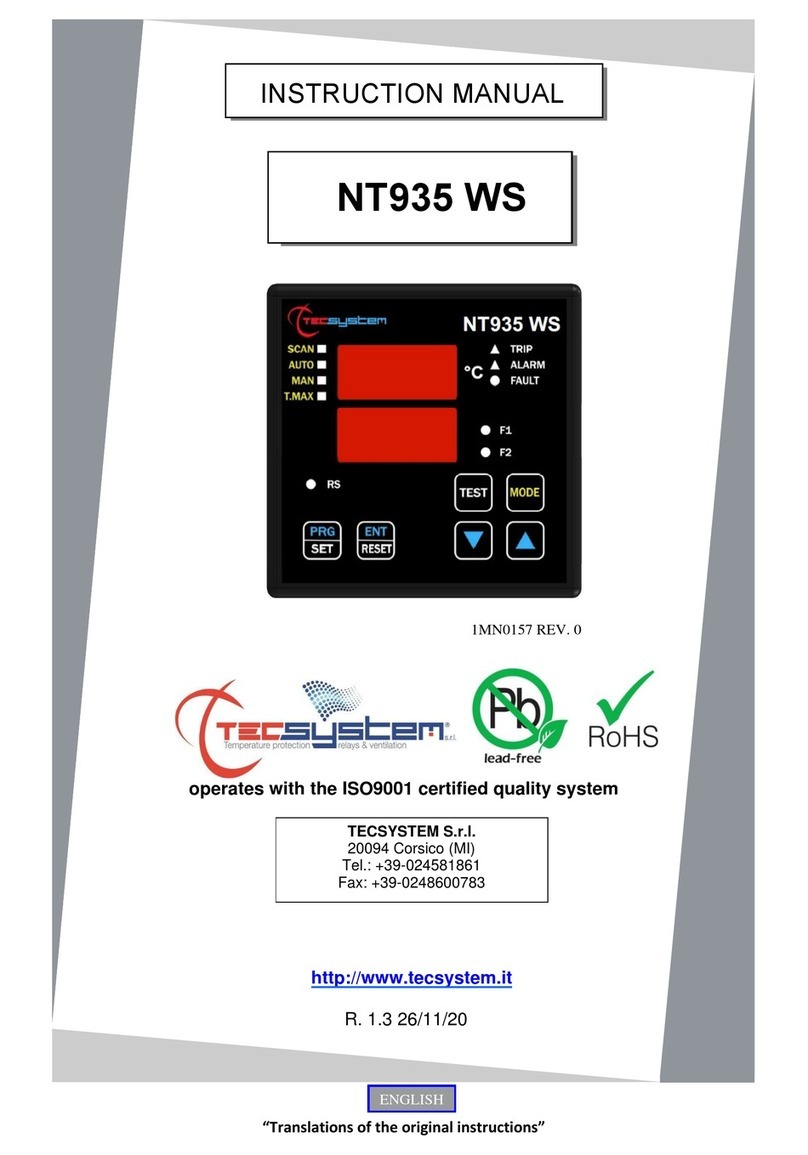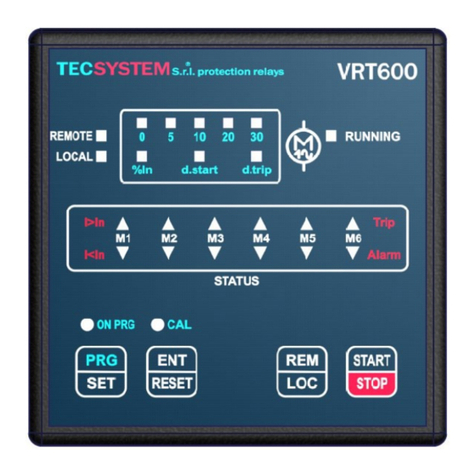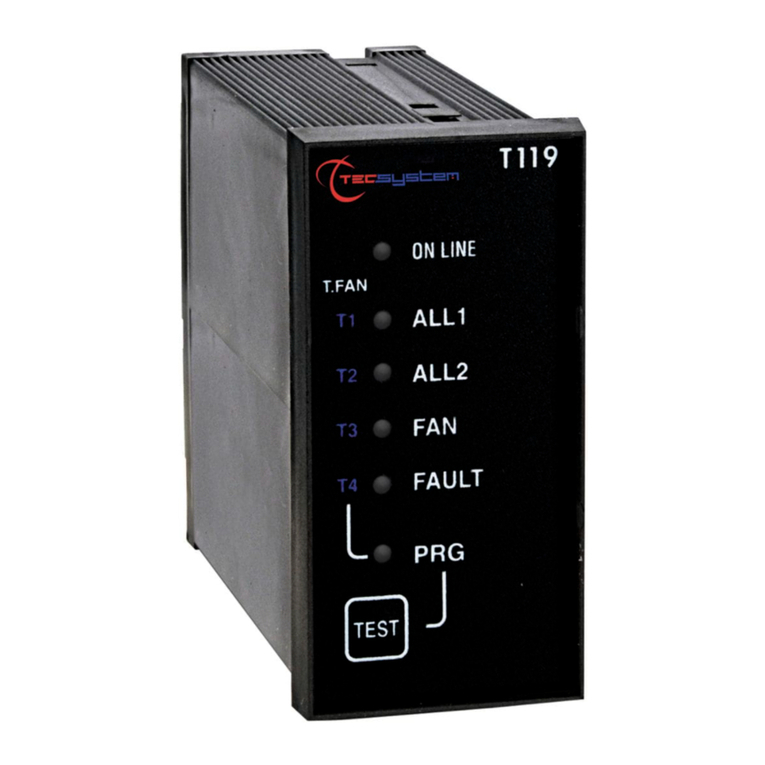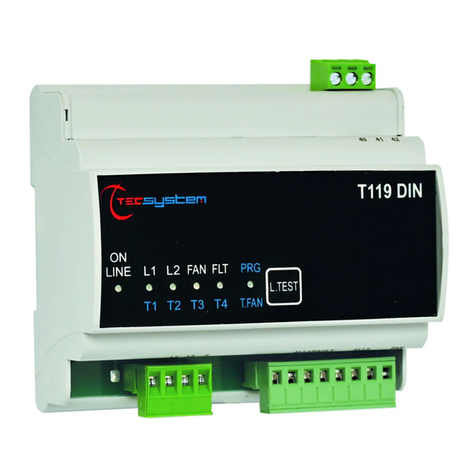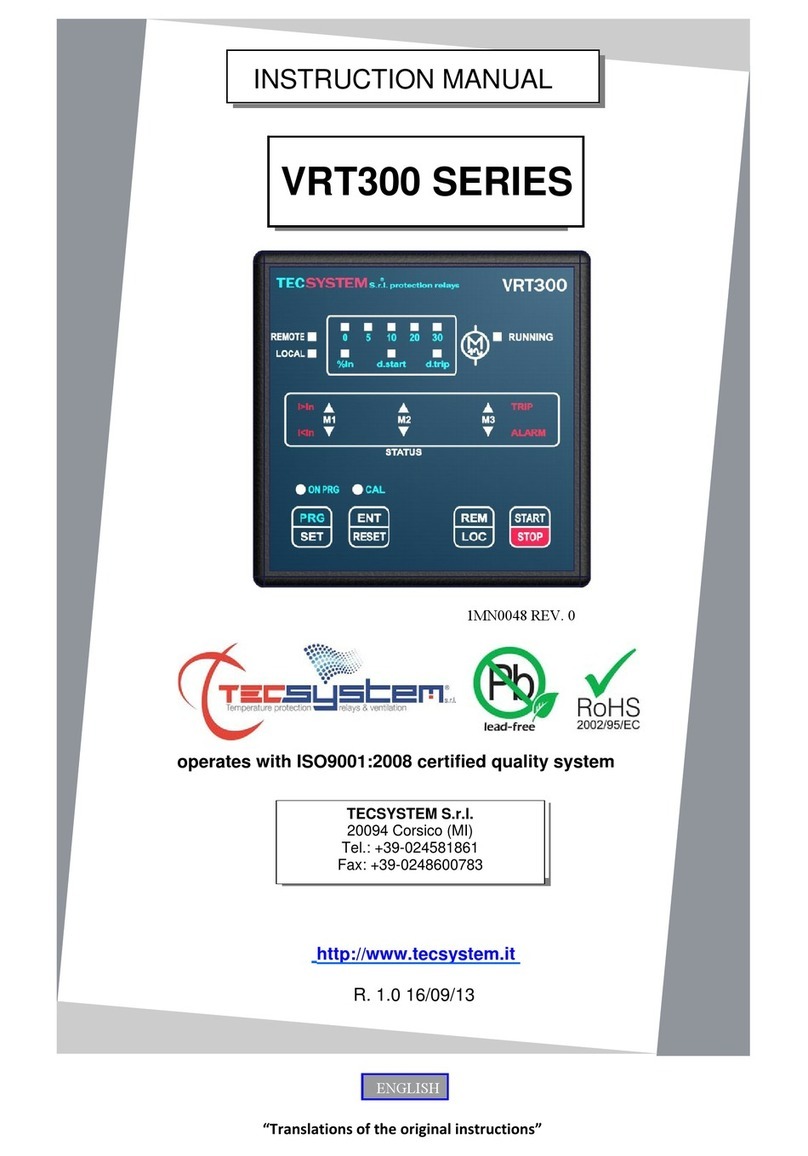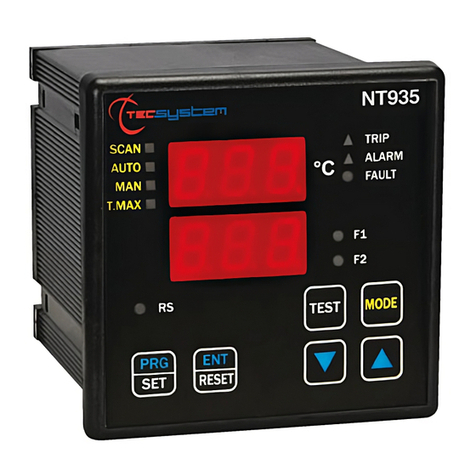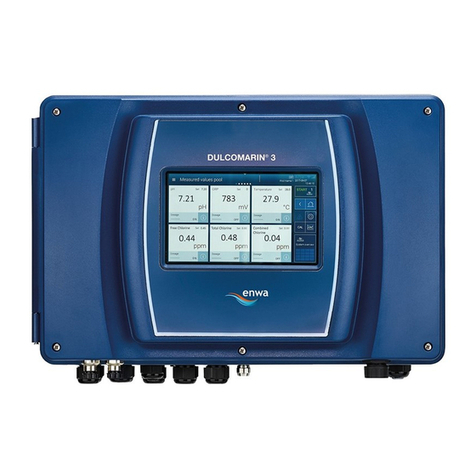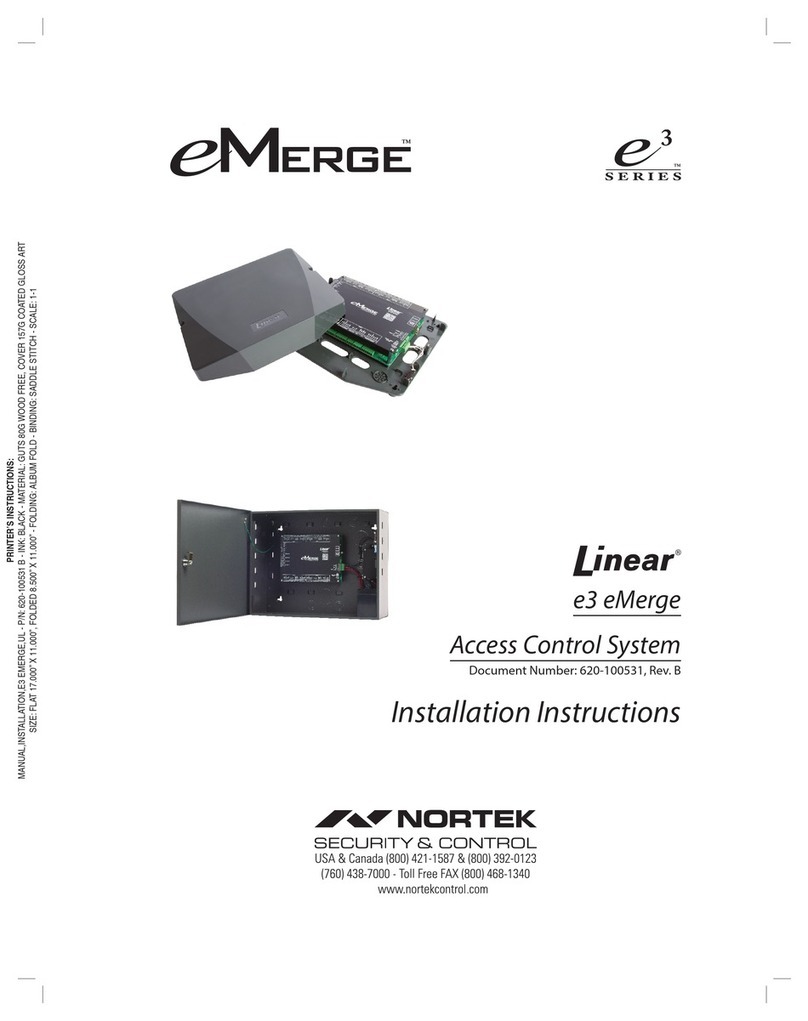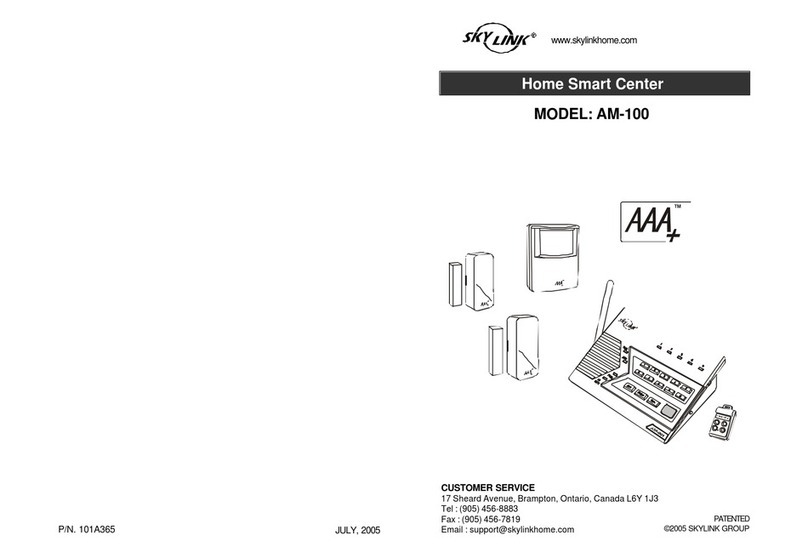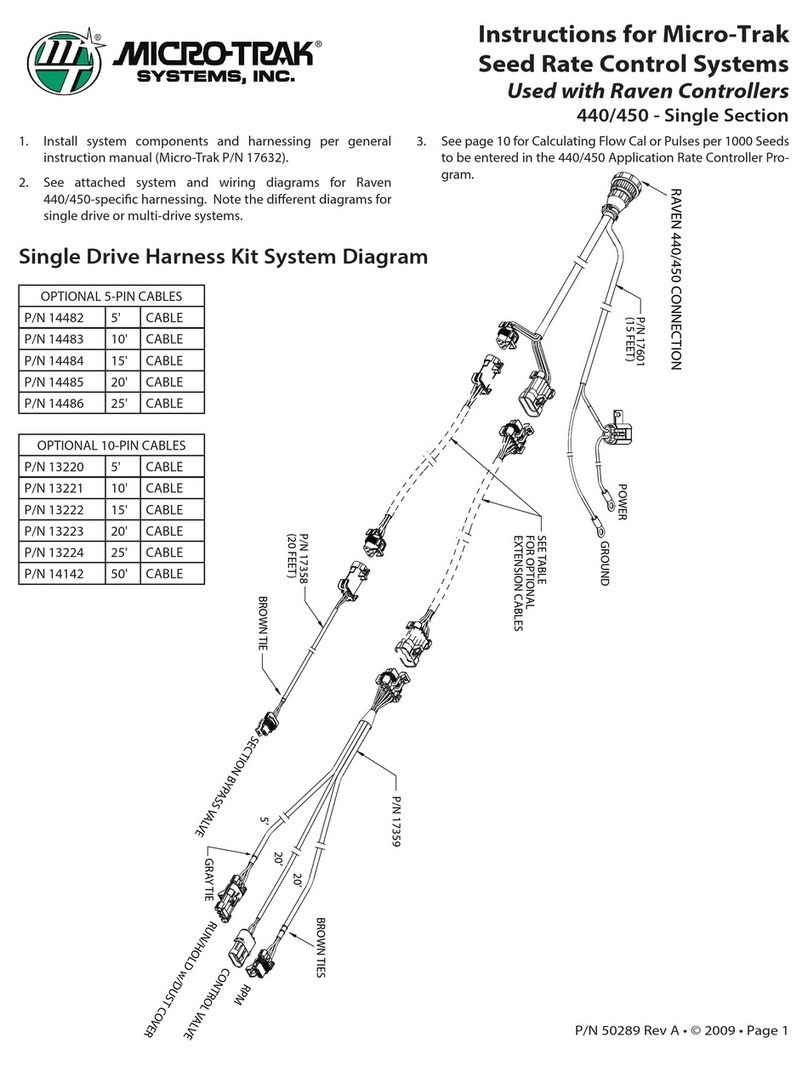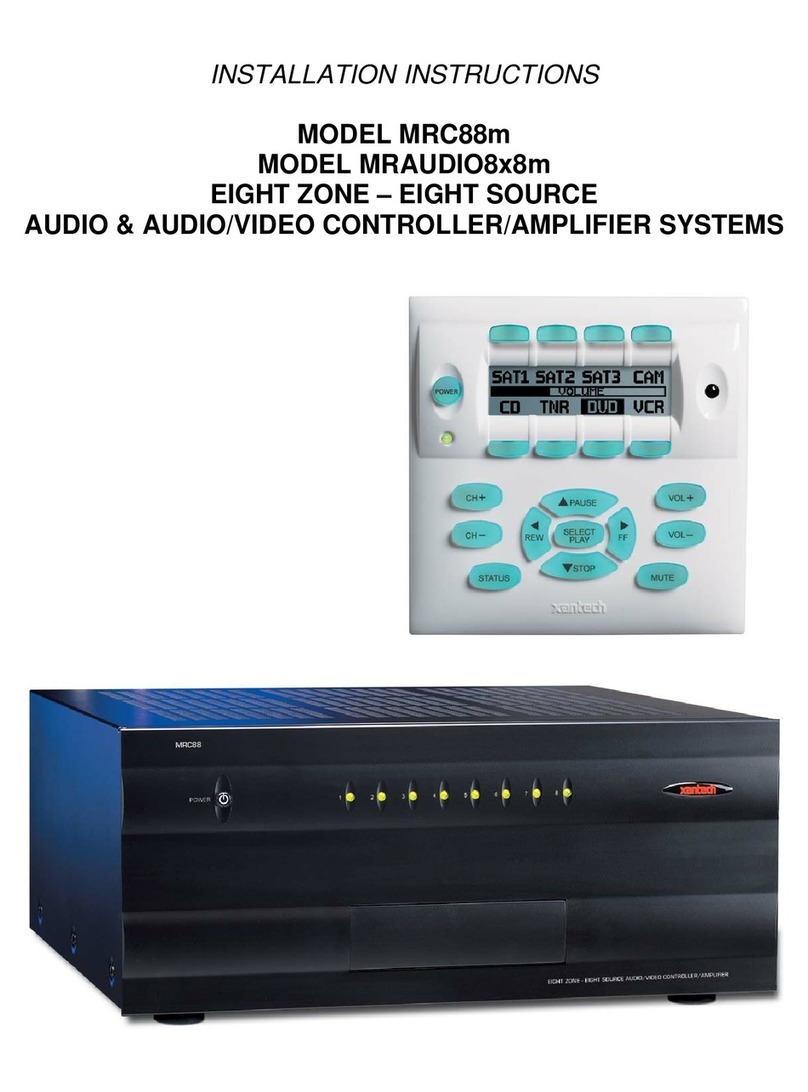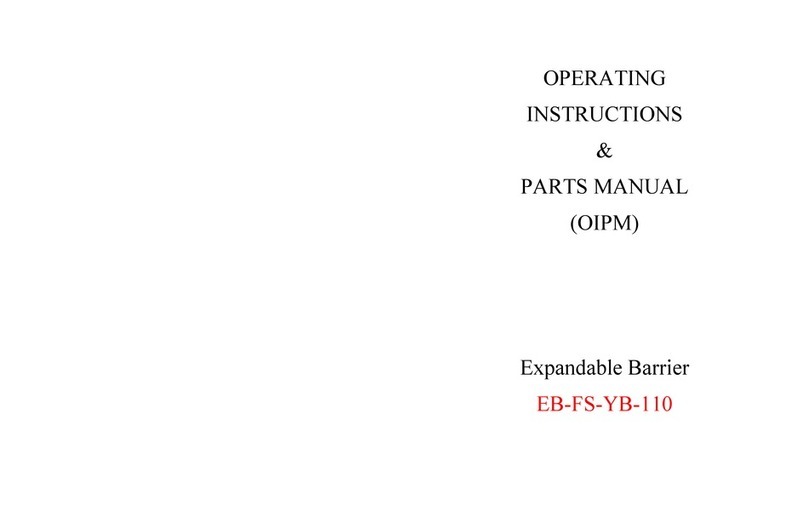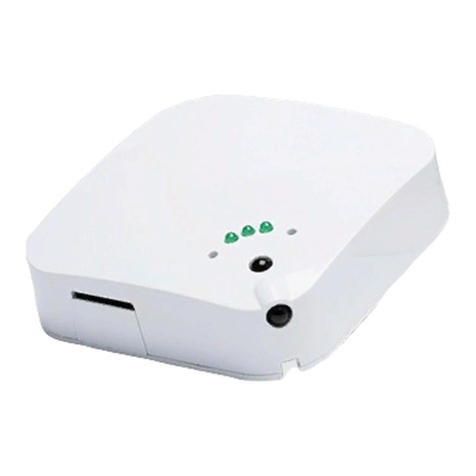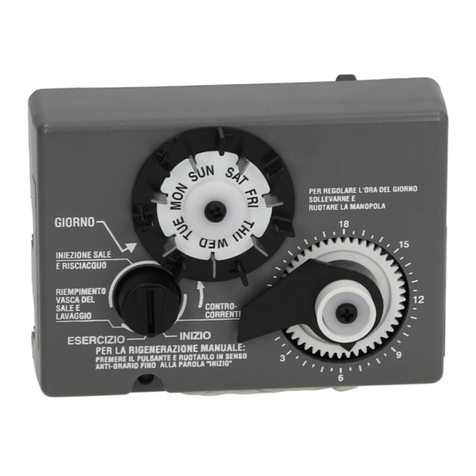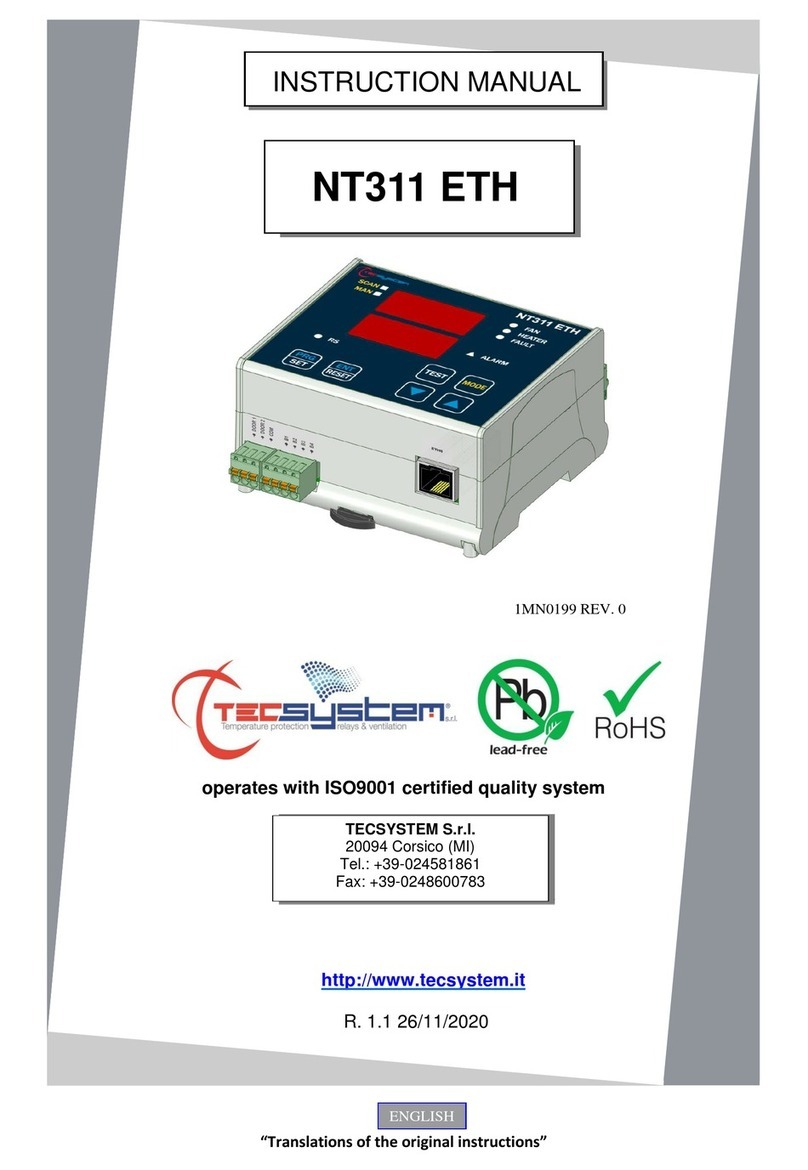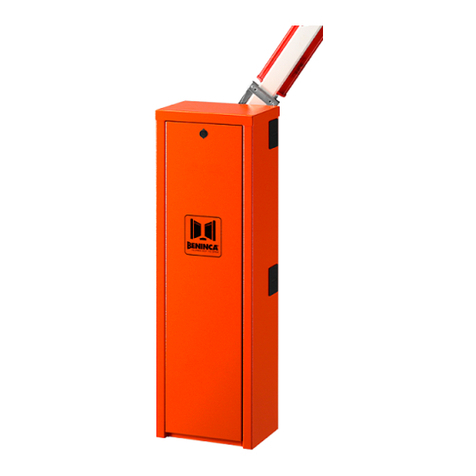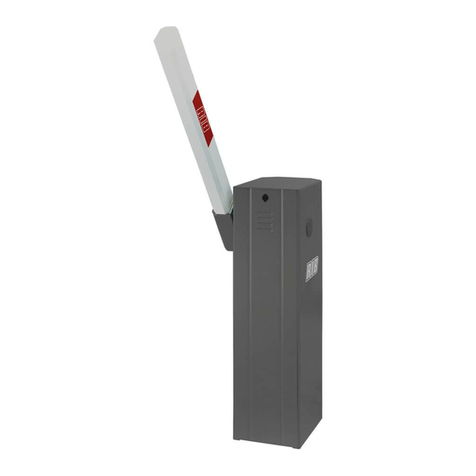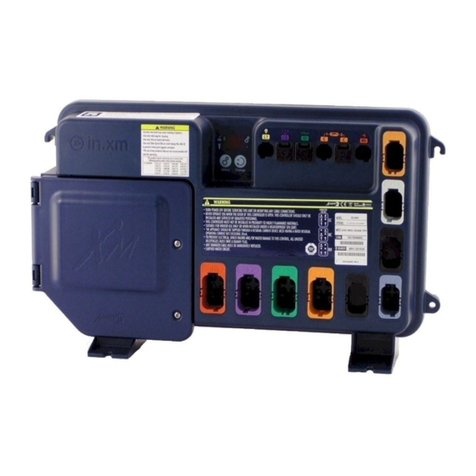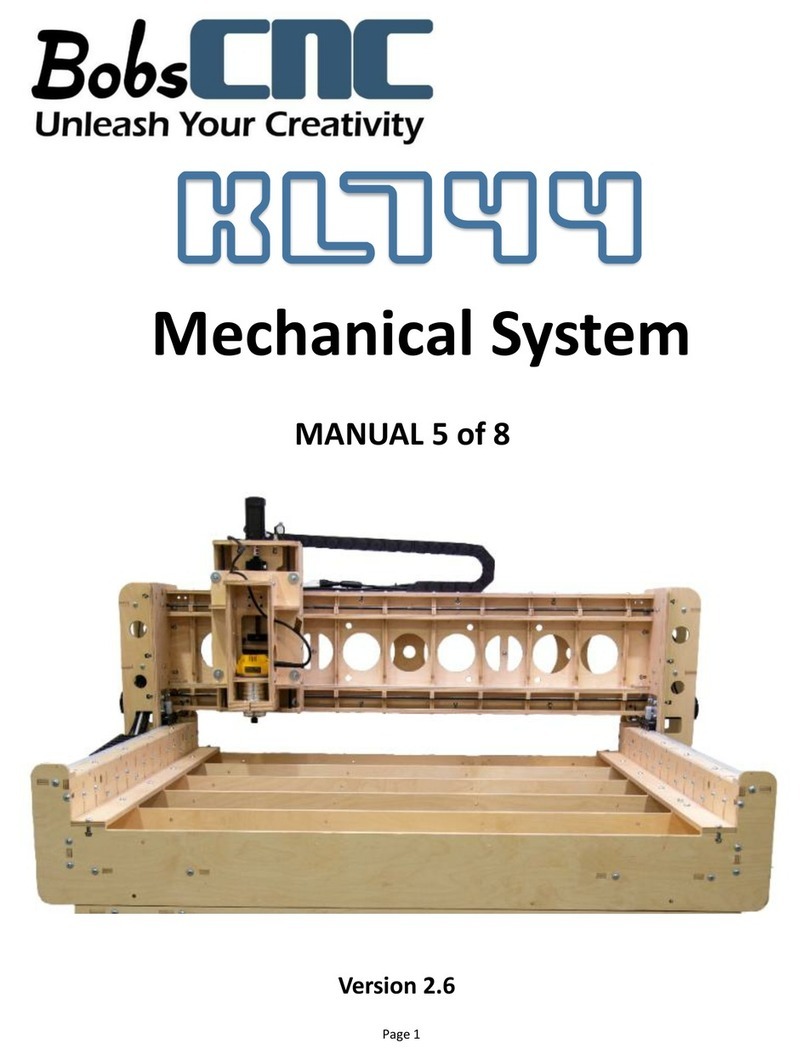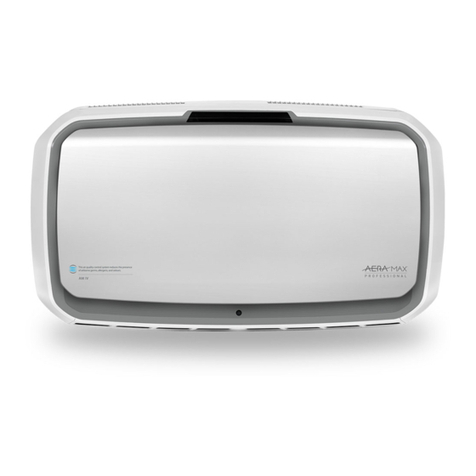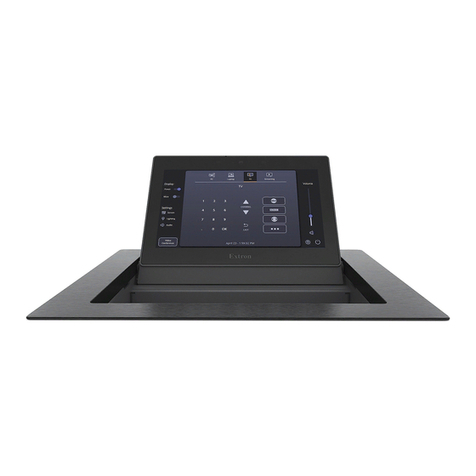DISPLAY
The first display is dedicated to temperatures.
The second display to the monitored channel.
When the device is switched on or after a reset, the model of the control unit, the type of sensors, VER "00" (firmware
version) and the temperature range of the device and the identification abbreviation are always shown on the display.
Pressing the MODE key, the display modes can be set:
•SCAN: the control unit shows in scanning (every 2 seconds) all the enabled (°C) and disabled (NO) channels.
•AUTO: the control unit displays the hottest channel automatically.
•MAN:manual reading of the channel temperature using the up/down keys
•T.MAX: the display shows the maximum temperature of the channel selected with the cursor keys.
In the event of a fault, the Tmax value is replaced with the type of fault stored (fcc-foc).
Turning on the Trip Alarm-Fault LED warns of any events that have occurred.
The recordings are always successive to the moment in which the T.Max is reset (by pressing RESET).
OPERATING PROGRAM CONTROL
To control the protection levels programmed, press the PRG key twice to access the VIS programme. Repeatedly pressing
the PRG key, you can scroll through all the previously loaded values in sequence. After 1 minute's keyboard inactivity, the
programming display procedure is automatically abandoned.
To stop the display, press the ENT key.
NOTES ON SCAN AND MAN FUNCTIONS
During the SCAN and MAN modes, the operation of the FO 935 can be displayed.
1) RUN cPU:
This message appears upon ignition of the device.
2) Ech Err:
This message appears when damage in the EEPROM memory is detected.
Pressing Reset will cancel the message and restore the original default parameters, listed in the programming paragraph
on pages 19-20 return the control unit to TECSYSTEM for repairs.
3) TEC err: this message appears when a loss of communication is detected between the thermometric control unit and the
CFO 521 concentrator. The temperatures shown on the display all appear at 0°C.
4) FO Err: this message appears when it is detected that one or more FO sensors are not working correctly FCC, FOC and
FLT, signals, see sensor diagnostics on page 17.
In case of Err the FAULT relay will be de-energised.
The above messages will be displayed following the 1-2-3-4 priority stated.
LED TEST
We suggest carrying out the control unit LED test regularly.
For this operation, press the TEST key briefly; all the displays turn on for 2 seconds.
If one of the LEDS does not work, please return the control unit to TECSYSTEM for repair.
ALARM RELAY TEST
This function allows you to carry out a test of the relays operation without having to use further devices. To start the test
procedure, press and hold the TEST button for approximately 5 seconds: the TST indication appears for 2 seconds
confirming entry into the Relays Test mode.
The lit LED indicates the relays to be tested, use the cursors to select the desired relay.
Press the SET and RESET keys to energise and de-energise the relay to be tested; the display will show ON-OFF.
After 1 minute's keyboard inactivity, the RELAY TEST procedure will be automatically abandoned.
To stop the RELAY TEST procedure, press the TEST key.
ATTENTION: entering the relay test mode will temporarily disable the fail-safe function, relays with enable function
switch (ALARM-TRIP-FAULT).
ALARM RELAY SILENCING
To silence the ALARM signal, press the RESET key: the relay will de-energise and the ALARM LED, which is on steady, will
start to flash. Silencing is automatically disabled when the temperature goes below the ALARM threshold.



















